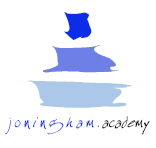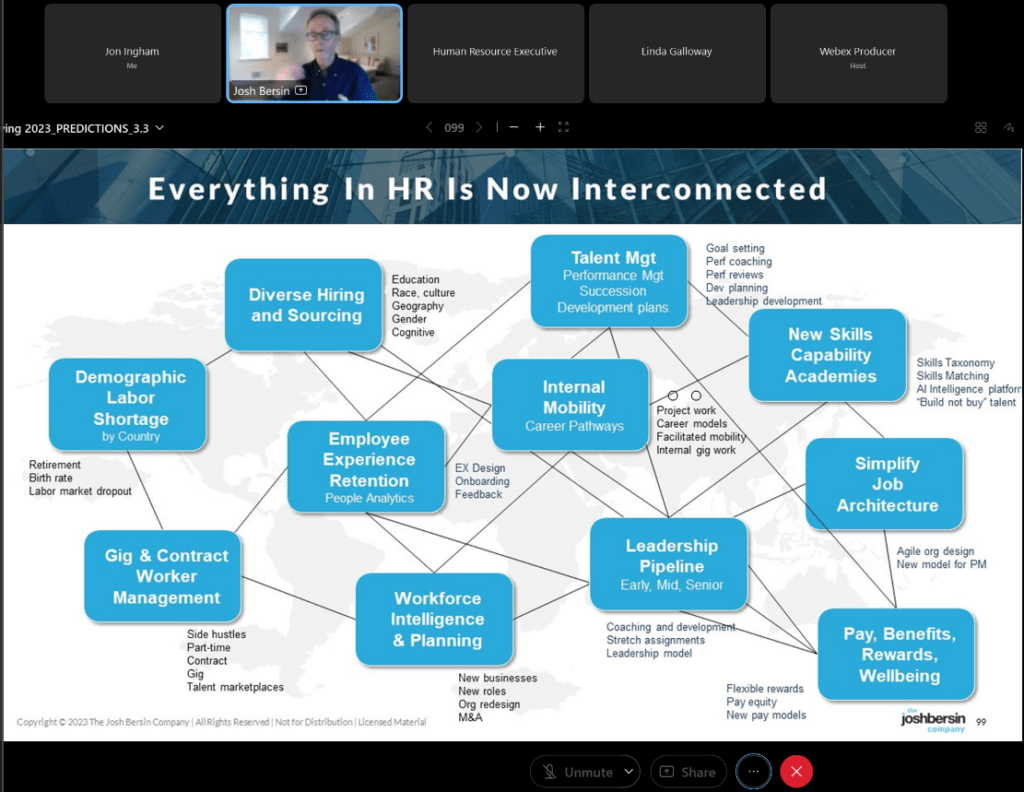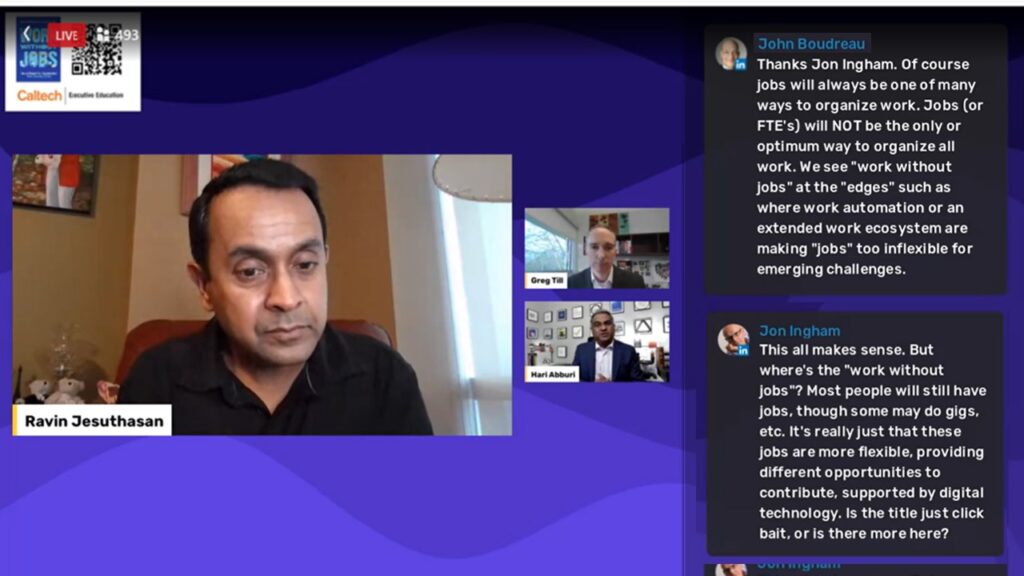McKinsey 21st Century HR Operating Models
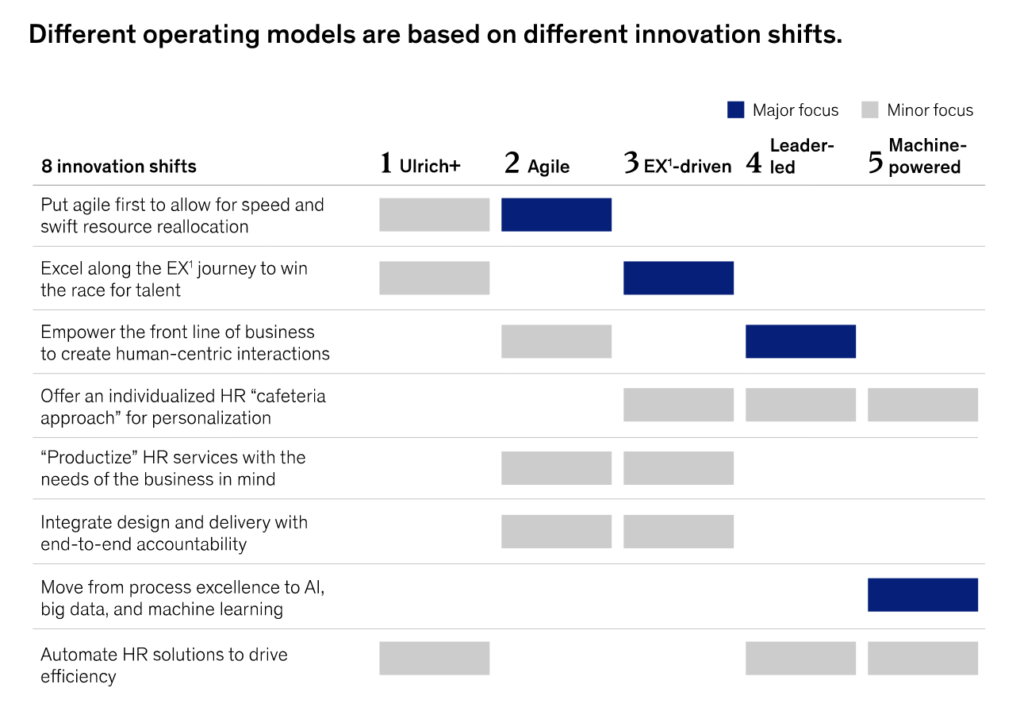
McKinsey have recently published suggestions on how the HR operating model is changing to ‘drive value in a volatile business environment’.
I definitely agree with the firm that the traditional HR operating model needs to evolve (the ‘melded network HR model‘ is my suggestion about how).
And I also agree that McKinsey’s 8 innovation shifts and 5 operating model archetypes are all sensible, but I do have comments on how we should use them:
.
8 innovation shifts

These eight shifts, starting with focusing on the employee experience journey, as above, all relate quite closely, eg most agile HR organisations are focusing on employee experience and product management, most focusing on machine learning are automating solutions, etc. Many HR organisations will be experiencing all of these shifts and will be trying to respond to them all as well. So, the thing that’s most important isn’t the shift, but articulating how HR will be responding to them.
This means that the real key isn’t ‘to consciously select the most relevant of these innovation shifts to help them transition gradually toward their desired operating model’. Instead of this, we should be defining principles and organisation outcomes – eg putting people first is a principles, providing speed and swift resource reallocation is an outcome; excelling on the employee experience journey is a principle, winning the race for talent is an outcome.
It’s also not enough to ‘adopt agile principles’ – instead, HR needs to develop its own principles for how it intends to be more agile (this is a good idea even in IT, it’s fairly essential in HR).
Creating specific principles and outcomes from McKinsey’s (and other) trends provides much better and more specific focus for designing a best fit operating model.
.
5 operating model archetypes
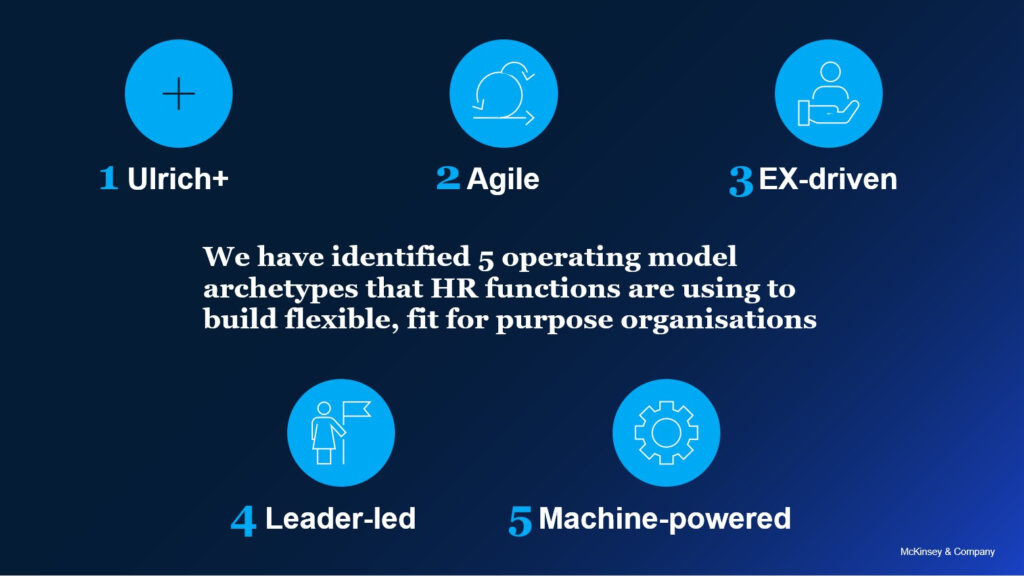
.
In the same way that McKinsey’s innovation shifts overlap, so do their operating models. Many HR organisations will want to build a model that uses some of all of these.
However, I do agree that these five aspects are all common parts of an evolved model:
- Ulrich+: if you’ve got inflexible COEs, you’ve implemented your model badly, it’s not the fault of the Ulrich Model. However, the easiest way for HRBPs to develop functional spikes is to transform COE centres into communities (see the melded network HR model).
- Agile: the smaller number of HRBPs here isn’t really about using agile, but a consequence of not having to adapt HR approaches to different business areas, and focusing on employee experience instead, which then makes agile possible.
- Employee experience: sharing responsibilities across HR, IT and Operations makes sense for a range of approaches but I still suggest HR retains accountability for ensuring compelling experiences are provided.
- Leader-led: this should be a focus (not the focus) for all HR organisations, however, it’s important that leaders and managers are able to take their responsibility on, ie that they’re committed and competent to manage their people, if strategic and people-centric objectives are to be achieved.
- Machine-powered: again, this should be a very common aspect for HR, although the potential to create a platform supporting a more networked HR organisation is a more advanced option for more technology enabled organisation.
.
To the extend that the above are all separate achetypes, HR’s task shouldn’t be ‘to consciously select the most relevant of these innovation shifts to transition gradually toward their desired operating-model archetype’ as McKinsey suggest. Instead we should use our bespoke principles and outcomes to build a best fit operating model that may or may not resemble one or all of these archetypes.
.
In summary, I worry that McKinsey’s overall suggestions on evolving the model are likely to leave HR organisations as stuck as they were if they unthinkingly implemented the Ulrich model. (See this post from ten years ago: Don’t blame the Ulrich model: https://joningham.academy/ulrich-model/).
What we really need to do is to develop specific outcomes and principles for HR, as explained above, and then create a best fit model that provides these outcomes in the manner of the principles. Which is likely to partly resemble some of, if not all of the archetypes.
You’ll find more explanation in the Academy’s HR Transformation course.
.
Jon Ingham
HR and OD Strategist, Trainer, Learning Facilitator at the Jon Ingham Strategic HR Academy
